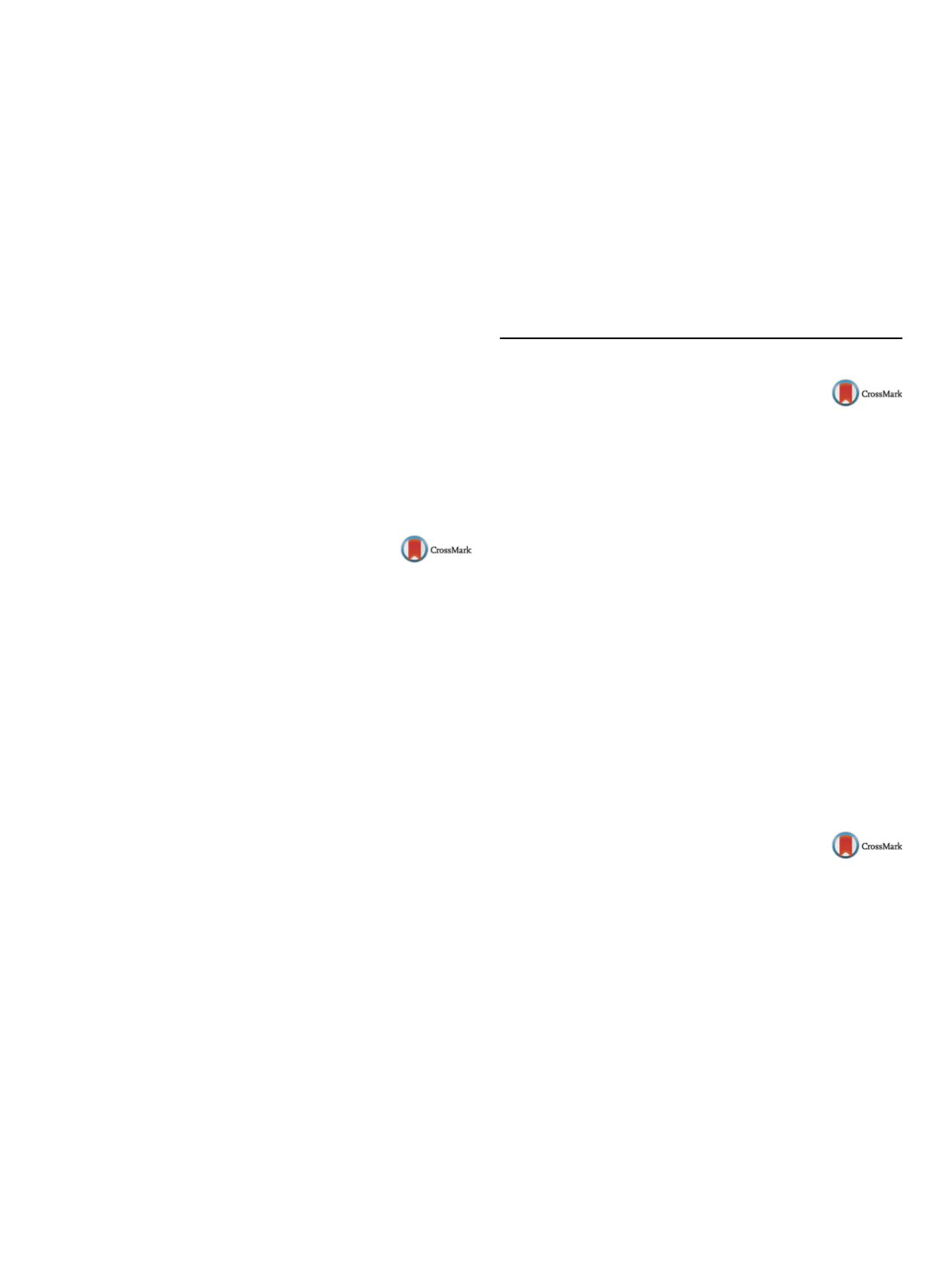

25th European Congress of Psychiatry / European Psychiatry 41S (2017) S772–S846
S799
Objective
The work initiated to study gene MDR1 C3435 T poly-
morphism and to assess its association with pharmacoresistance
formation in patients with epilepsy receiving antiepileptic drugs
(AEDs).
Materials
Study involved 89 patients with localization-related
epilepsy and 55 unrelated healthy subjects.
Results
Distribution of 3435 T/C polymorphism in NDR1 gene
was analyzed in the patients with the localization-related epilepsy
and nominally healthy donors. The distribution of frequencies
of gene alleles was found to correspond to the Hardy-Weinberg
equilibrium (
Р
> 0.05). Incidence of genotypic variants of the
polymorphism was as follows, CC was found in 18.6%, CT and
TT were observed in 55.9% and 25.4% of cases. In the con-
trols CC was found in 60.0%, CT and TT were observed in
33.3% and 6.6% of cases, respectively. The findings are the evi-
dence for significant effect of functionally weak variants in
C3435 T polymorphism of MDR1 gene on efficacy of antiepileptic
therapy.
Conclusion
presence of T-allele of C3435 T polymorphism of
MDR1 gene increases risk of pharmacoresistance in the patients
with epilepsy and is a significant and predicting criterion of efficacy
and feasibility of the antiepileptic therapy conducted.
Disclosure of interest
The authors have not supplied their decla-
ration of competing interest.
http://dx.doi.org/10.1016/j.eurpsy.2017.01.1538EV1209
Ambientation/acculturation of a
psychologist as “methodological
internship” for developing qualitative
research to study clinical supervisions
at a psychiatric outpatient service of
Brazilian general hospital
M.E.D.F. Bremberger , R.A. Bastos , V.L.P. Alves , E.R. Turato
∗
UNICAMP, State University of Campinas, LPCQ, Laboratory of
Clinical-Qualitative Research, Campinas, Brazil
∗
Corresponding author.
Qualitative research in a psychiatric setting requires methodologi-
cal updates on its modus operandi for professionals who migrated
paradigmatically from other academic areas. The mere adoption of
the concept of acculturation, from anthropology to field of health
services, may not correspond to specificities of assistance and
research in this field.
Objective
To discuss results of a certain environment and accul-
turation strategy for development of humanistic research that
took place in a psychiatric outpatient service of a university
hospital.
Method
Observation of environment of psychiatric supervision
for qualitativemethod in health setting, in period of sixmonths. The
first author, doctoral student, psychologist, systematically attended
discussions of clinical cases, observing relationship between super-
visors and residents. Data were recorded in field diary, followed by
free-floating readings and critical analyses. Thesewere also submit-
ted to peer reviewers of the LPCQ-laboratory of clinical-qualitative
research.
Results
– The experience, similar to an “internship”, has been
confirmed as necessary to conduct qualitative research in this field;
– It allowed accurate apprehension of features of environmental
functioning and, above all, cultural dimensions of language of par-
ticipants;
– This proved pertinent for clearing the theme-problem to be
researched;
– Postgraduate researchers, in particular those graduates under
other paradigms, have strengthened their methodological knowl-
edge on this field, and have been inserted epistemologically for
which they will have built new knowledge;
– Finally, this methodological stage improved the so-called active
observation and phenomenological listening of the researchers
regarding those observed.
Conclusions
The experience contributed significantly to estab-
lishing and validating the qualitative methodological course.
Disclosure of interest
The authors have not supplied their decla-
ration of competing interest.
http://dx.doi.org/10.1016/j.eurpsy.2017.01.1539e-Poster Viewing: Schizophrenia and other
psychotic disorders
EV1210
Psychosis in epilepsy patients
M. Agudo
1 ,∗
, M. Guillán
2, M.G. García
11
Hospital Universitario Rey Juan Carlos, Psiquiatría, Mostoles, Spain
2
Hospital Universitario Rey Juan Carlos, Neurología, Mostoles, Spain
∗
Corresponding author.
Introduction
Psychosis in patients with epilepsy was known in
antiquity and was already described in detail in the nineteenth
century.
This kind of psychosis can be categorized in relations to seizures:
preictal psychosis (before the seizures), during them (ictal) or after
the seizures (postictal psychosis)
Aims
Through several cases of patients that were treated in our
department with the diagnosis of psychosis, previously or during
the treatment diagnosed with epilepsy, we analyse the character-
istics and diagnostic criteria of these pathologies.
Methods
Systematic literature review in up-to-date and Pubmed,
looking for reviews on psychosis and epilepsy, in international sci-
entific journals of neurology and psychiatry.
Conclusions
Being able to recognize this several types of psy-
chotic states associated with epilepsy has a clinic and prognosis
utility, because made important differences in treatment and in
the evolution of the illness.
Disclosure of interest
The authors have not supplied their decla-
ration of competing interest.
http://dx.doi.org/10.1016/j.eurpsy.2017.01.1540EV1211
Family burden in caregivers of
schizophrenia patients
H. Ahlem , Y. Zgueb , U. Ouali
∗
, Y. Laajili , S. Ben Alaya , R. Jomli ,
F. Nacef
Razi hospital, psychiatry A, Manouba, Tunisia
∗
Corresponding author.
Introduction
Schizophrenia is a disabling, chronic psychiatric dis-
order that has far-reaching consequences for both patients and
their relatives. Management of schizophrenia involves family sup-
port and care. In this context, burden of care is a concept related
to caregivers and family’s members of patients assuming respon-
sibility for these patients. This construct can be conceptualized as
a syndrome of varying clustering affecting the general and mental
health of caregivers.
Objectives
This study aims to determine the frequency and clin-
ical correlates of family burden in schizophrenia.
Methods
We performed a transversal study in department
of psychiatry A at Razi hospital. Thirty principal caregivers of
schizophrenia patients were interviewed. Caregiver’s burden was
assessed using the Zarit scale.
Results
The mean age of caregivers was 48.7
±
7.15 years. In our
sample, 63.3% (
n
= 19) were parents, 23.33% (
n
= 7) were brothers


















